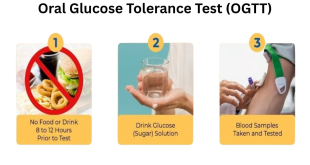 Chances are that you might have heard about lupus after Selena Gomez declared she had it and went through treatment for her kidney transplant. Lupus is a debilitating disease that a majority of the people in Nepal hasn’t heard about. The truth is, I had no idea what lupus was until I was diagnosed with it.
Chances are that you might have heard about lupus after Selena Gomez declared she had it and went through treatment for her kidney transplant. Lupus is a debilitating disease that a majority of the people in Nepal hasn’t heard about. The truth is, I had no idea what lupus was until I was diagnosed with it.
Lupus is a chronic autoimmune disease in which the immune system of the body attacks the healthy tissues, causing inflammation and pain. Common symptoms include joint pain, fever, rashes, hair loss, chest pain, mental fogginess, fatigue, and oral and nasal ulcers. Causes of lupus are unknown, but the reasons could be linked to genes, environment, and hormones.
My experience of feeling unwell wasn’t very startling. It started off with a joint pain, a fever that wouldn’t subside, and loss of appetite. After visiting different specialists and conducting umpteen tests, I was told I had lupus, and that it had affected my kidneys. Although my rheumatologist had prescribed a few medicines, I wasn’t convinced. I asked him, “Doctor, how do you know what stage my kidney is and what medicines I’m supposed to take without a biopsy?” He said, ‘Why do you want to fiddle with your kidneys? Just take these and you will be fine.”
Nope, I still wasn’t convinced. I did all my research and decided to do a biopsy. After it was confirmed that I had class IV lupus nephritis, I visited another doctor. He looked at my results and told me that my kidneys were almost damaged and that the results were pretty bad. At that time, I had no clue what autoimmune disease really was. I was preoccupied with my new reality and felt alarmingly lonely and scared. The doctors didn’t comfort me; rather, I was even more terrified. Having been left with no choice, I went to Delhi for my treatment and recovered in no time.
It is estimated that over five million people worldwide live with this incurable disease. In Nepal, lupus is widely under-diagnosed, because of the lack of knowledge from the patients, as well as the medical fraternity. According to the Lupus Foundation, it takes an average of six years from the onset of symptoms to be diagnosed. Patients can end up consulting different specialists for different symptoms—rheumatologist, dermatologist, nephrologist, immunologist, and endocrinologist—before they receive an accurate diagnosis. A large majority of patients (63 percent) reported being given an incorrect diagnosis along the way. In Nepal, a lot of people with lupus would like to see the establishment of autoimmune centers, where a doctor would coordinate and oversee a patient with different doctors, as at a cancer center.
 Lupus has a profound effect on the quality of life of a person, because once you are diagnosed with it, you continue to have complex, chronic, and challenging life experiences. The physical impact of lupus, like butterfly rashes, constant pain, and hair-loss, makes you feel disorientingly conscious all the time.
Lupus has a profound effect on the quality of life of a person, because once you are diagnosed with it, you continue to have complex, chronic, and challenging life experiences. The physical impact of lupus, like butterfly rashes, constant pain, and hair-loss, makes you feel disorientingly conscious all the time.
We all know how ridiculously expensive healthcare is in 2019, but it’s even more expensive to have lupus. The Lupus Foundation estimates that each patient loses $20,000 a year in healthcare and lost productivity. Other reports indicate annual costs of up to $35,000 a year. People with lupus also face high annual pharmacy expenses.
Several indirect, or ‘hidden’, associated costs and burdens are also incurred through the course of the condition. Having lupus affects employment, where studies show that patients with moderate or severe lupus have to stop working due to their health. Absenteeism and school dropout are associated with additional economic burden in the workplace and at school. The range of average unemployment across published data suggest 12-49 percent unemployment for lupus patients.1 Two of three patients experience complete or partial loss of income due to health impact of lupus on employment.1
Being chronically ill can greatly impact a person’s mental and emotional well-being. Recent studies show that up to 75 percent of patients experience neuropsychiatric symptoms like depression, anxiety, panic attacks, headaches, and even psychosis. These feelings are caused by multiple factors, such as outward effects of the disease. Visible problems, such as a facial rash or weight gain from steroids, can affect your physical appearance and self-esteem.
As women are predominantly affected by lupus, it brings significant costs into their personal, family, and professional lives. Especially in Nepal, one can feel socially isolated when you can’t participate in everyday social activities due to pain and fatigue. Emotionally, this can lead to frustration and feelings of hopelessness. Uncertainty about the future is inevitable, as questions of staying independent or managing life physically and financially comes up. Dealing with family relationships can be difficult, as the disease does not show outward signs. It does have a significant economic and social impact on family members and friends. I have come across many patients who are unmarried because of the assumption that no one wants to marry a chronically sick person. Some patients don’t feel comfortable sharing their lupus status with their spouses, further increasing feelings of fear, worry, and anxiety. I have had several encounters where people looked at me in pity. At one point, just liked anybody else, I lost all my confidence and forgot what it was like to live fully.
Having trudged that path and knowing how dark it can be out there, I now am obsessed with discovering ways to heal. I am on a constant path of learning more about the disease and its treatment. I make it a point to share every information with my family and friends so that they can better understand the disease and how it affects me. Their overall support is the most important factor for success in managing lupus.
At one point, I started searching for people who understood what I was going through. French novelist Alphonso Daudet (1840-1897) describes staying in a ‘sanatorium’, where everyone understands what everyone else is going through. He talks about the strange pleasure of searching for patients whose experience of illness is like his own. For me, this version of the sanatorium is Facebook, where you get to find people who have felt the same sense of suffering, fear, isolation, and pain. I began Googling and blogging about what it was like to have lupus in Nepal and found people with similar symptoms I had over the years.
Then, I created a group called Lupus Nepal, a support group/community that is accepting, understanding, and inclusive, and who are ready to help each other in every way. It aims to create a space to share experiences and to learn from each other. It’s about providing emotional support to yourself and your loved ones from a community that knows what you’re going through. We started meeting on a regular basis to discuss about medicines, doctors, treatments, and emotional and mental issues that we don’t feel comfortable sharing with others. We created our own ‘family’.
Besides external support, I realized that changing our beliefs about ourselves and about lupus is a necessary pre-requisite to heal naturally. We can do that by cultivating awareness of our emotions, relationships and surroundings. When that becomes a habit, we start recognizing patterns and consciously recreate new thoughts and emotions. It’s not easy to embrace change or discomfort. When you’re in a constant battle with yourself, that’s when you need to be committed to your goal of healing. Once you learn to master the rhythm, your body starts aligning with your mind, and you feel the effect mentally, physically, and emotionally. Your outcome depends on you! I now recognize these emotions. When I feel overwhelmed, I try and take it easy, and have cultivated the habit of meditating and doing simple exercises. Nature therapy, baking with children, painting, gardening, or just reading works wonders for me. I read that a medical practice in England gives patients indoor plants to help boost wellness. I tried, and observed that house plants really help foster happiness and reduce anxiety, depression, and loneliness.
Now, after so many experiments and experiences with lupus, what I’ve gathered is that it’s possible to completely reverse your current condition and heal yourself naturally. So, whether you have had lupus for a few days or a few decades, take heed of these three truths: 1. you’re not alone, 2. it will be hard, but it’s not the end of you, and 3. it’s okay to not be okay. Don’t let lupus steal your joy and your purpose of life. Change your own narratives and realize the amazing power you have to keep fighting, because that’s what helps us heal.
“The marvelous richness of human experience would lose something of rewarding joy if there were no limitations to overcome. The hilltop hour would not be half so wonderful if there were no dark valleys to traverse.”
-Helen Keller
 Medicosnext
Medicosnext



